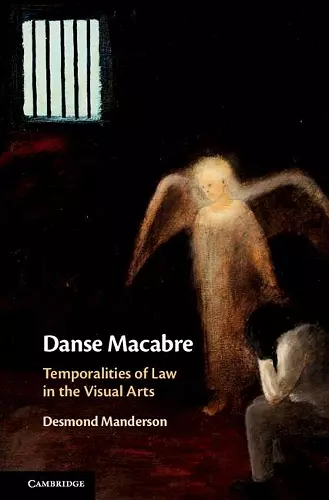Danse Macabre
Temporalities of Law in the Visual Arts
Format:Paperback
Publisher:Cambridge University Press
Published:17th Dec '20
Currently unavailable, and unfortunately no date known when it will be back

A revolutionary approach exploring legal themes such as justice, legitimacy, sovereignty, and power through close readings of major works of art.
The visual arts offer wholly new resources through which to understand the representation, power, ideology and critique of law. This interdisciplinary book includes exceptional close readings of major works by artists from the sixteenth to the twenty-first century informed by legal and social history, and by recent developments in legal and art theory.The visual arts offer refreshing and novel resources through which to understand the representation, power, ideology and critique of law. This vibrantly interdisciplinary book brings the burgeoning field to a new maturity through extended close readings of major works by artists from Pieter Bruegel and Gustav Klimt to Gordon Bennett and Rafael Cauduro. At each point, the author puts these works of art into a complex dance with legal and social history, and with recent developments in legal and art theory. Manderson uses the idea of time and temporality as a focal point through which to explore how the work of art engages with and constitutes law and human lives. In the symmetries and asymmetries caused by the vibrating harmonic resonances of these triple forces - time, law, art - lies a way of not only understanding the world, but also transforming it.
'This book dances indeed. Moving deftly from one angle of the triangle of time, law, and art, to the other, this book shows - through a great variety of artworks, all taken up in detail - the complexities and the consequences of these pluralities. There is no other book which does this in such depth in all three fields. We know that law does not equal justice, that the line between law and genocide is flint-thin, and that the time of the clock is very different from the temporalities we experience. That law's dance has death at its heart is a fact of life, but that so many artists in so many different cultural places and moments have been able to make this sensuously perceptible and deploy it as a cry for a justice that is, precisely, not blind: this is what Manderson demonstrates in this utterly enjoyable book.' Mieke Bal, Cultural theorist, critic, video artist and curator
'Quondam musician and part-time playwright, full-time jurist, artisan and aesthete, Manderson extracts, expounds and exemplifies the reinvention and relocation of law in its artistic context. Danse Macabre bravely overcomes the jurist's twin fears: of the image, and of theory. This book brilliantly interprets the art that surrounds law as a compelling narrative of justice and of failing legality.' Peter Goodrich, Director of Law and Humanities, Benjamin N. Cardozo School of Law, Yeshiva University, New York
'Drawing on recent psychoanalytical, hermeneutic and phenomenological approaches to the histories of art, Manderson weaves a history of the law from 1500 to the present day - a history that neither progresses nor unravels but keeps returning to the archetypal, indeed holy, trinity of law, death and time, which he argues inhabits and manifests in art. Through a close and extended reading of his chosen artworks, and through the innovative methodologies he uses to unpack them, Manderson's chapters build like symphonic movements into a veritable masterclass in the historiography of art. Art, Manderson argues, cannot escape the deathly grip of the law and its temporality - a grip, he argues, that will always entice and elude us.' Ian McLean, Hugh Ramsay Chair of Australian Art History, University of Melbourne
ISBN: 9781316611265
Dimensions: 229mm x 152mm x 16mm
Weight: 415g
307 pages